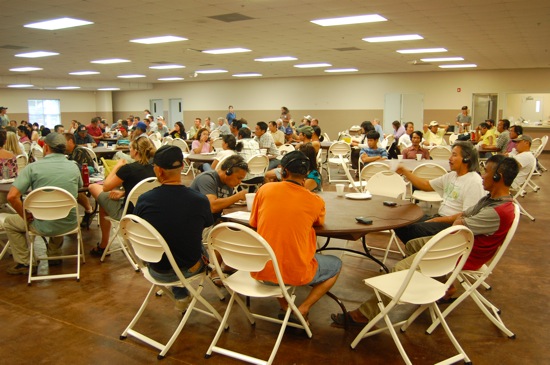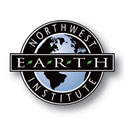Pulling Together a Community
The most powerful night of my time spent in the Gulf was our community meeting in D’Iberville, Mississippi. Hundreds of fishermen gathered together to evaluate their unraveling realities and plan next steps. What struck me on an emotional level — something that surprised even me — was the level of division in the room. Sure, there were common threads — fear, anger, powerlessness — but varied levels at different camps throughout the group worked to exacerbate a bad situation and make it even worse.
There were the men who would eat the shrimp and those who wouldn’t, the men who had a market that would buy their product and those who said it didn’t matter if they caught anything because there was “nobody buyin’.” There were those who had recently been fed dinner by a community organization and those who “got nothin’,” those who had been hired by BP to use their boats as Vessels of Opportunity and those who hadn’t and didn’t know why. There were those who had received their claims from BP, and those who were still trying. There were recreational fishermen, commercial fishermen, and charter boat operators. Some were eager to sign a petition calling for Mississippi Director of Marine Resources, Mike Walker, to resign but also a few who felt like pushing for that wasn’t going to solve the problem. The fear, sadness and separation were palpable in a warm cafeteria that smelled — ironically — of beans, rice and shrimp. The purpose of the evening was to unite these men, but while the goal was physically met, on a fundamental level the shrouds of us versus them were everywhere you turned. And everywhere you turned you saw another devastated, weary face.
It took a few hundred miles moving west on Highway 10 and the processing of my last night in the Gulf to settle on a realization that would guide me home: with division, with the fracture of a community, comes the opportunity to put it all back together — with stronger joists, a different blueprint and a broader foundation, perhaps, than what stood before.
Two months later, I throw my efforts behind my own community of neighbors and family as we embark on a two-week journey mapped for us by the Northwest Earth Institute’s EcoChallenge. Fall has arrived, school is back in session and this is the time for a seasonal shift in my neighborhood toward more elements of separation than cohesiveness. Cold weather closes doors, people start to move faster and quieter as teachers and students re-engage in school’s rhythm and our lives usually close from one another for a good six months. But not this year — we are going to meet first to decide how to challenge ourselves surrounding sustainable food choices and trash reduction. We are going to talk about how the oil spill and oil industry is connected to the choices we make every day. We are going to make sustainable meals and sit around a table and celebrate what is surprisingly easy, grumble about what is predictably difficult and attempt to form solutions to these challenges.
Separation in communities can be devastating or barely noticeable, hurtful or understood. But as long as there is potential to come back together to recreate a new, powerful whole — what was once divided can be rebuilt in a stronger and more lasting way.
By Serena Talcott Baughman
























NO COMMENT
Leave a comment